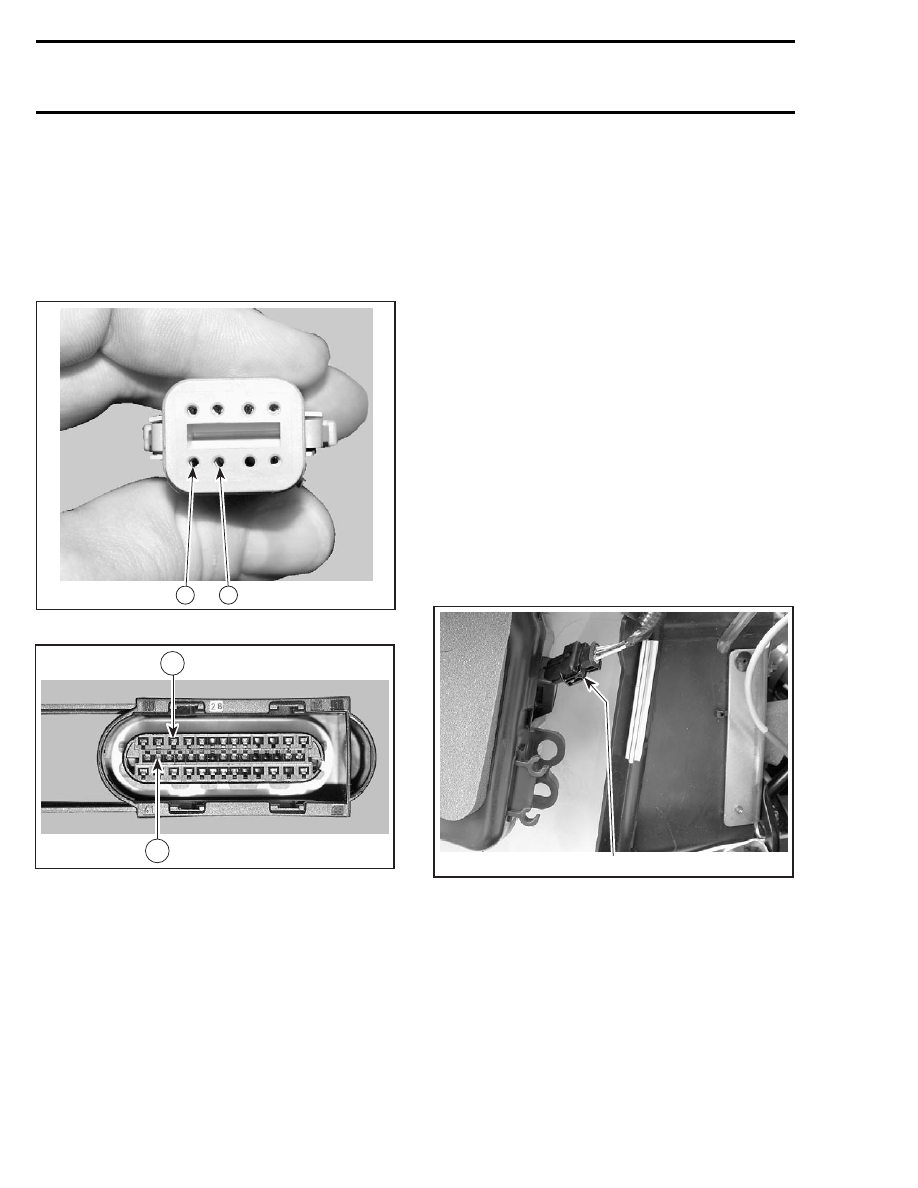Snowmobile Ski Doo REV SERIES (2004 year). Manual - part 52

Section 05 2–TEC ENGINE MANAGEMENT
Subsection 02 (COMPONENT INSPECTION AND ADJUSTMENT)
Refer to TEMPERATURE SENSOR TABLE at the
beginning of this section to find the corresponding
resistance value for this sensor temperature.
If out of specification, replace the sensor.
If resistance tests good,reconnect the WTS and
disconnect the connector A on the ECM as well
as the engine connector.
A32C9IC
6
5
ENGINE CONNECTOR
R1503motr187A
11
27
ECM CONNECTOR A
Using a multimeter, recheck resistance value
between terminals 5 and 6 on engine connector.
This resistance is used for temperature gauge.
Refer to TEMPERATURE SENSOR TABLE at the
beginning of this section to find the corresponding
resistance value for this sensor temperature.
Recheck also resistance value between terminals
11 and 27 on ECM connector A. This resistance is
used for ECM.
Refer to TEMPERATURE SENSOR TABLE at the
beginning of this section to find the corresponding
resistance value for this sensor temperature.
If resistance value is correct, try a new ECM. Refer
to ECM REPLACEMENT procedures elsewhere in
this section.
NOTE: Check if wiring harness shows any signs
of scoring prior to replace the ECM.
If resistance value is incorrect, repair the connec-
tors or replace the wiring harness between ECM
connector and the CTS.
Replacement
Drain cooling system.
Disconnect CTS connector and remove CTS.
Install the new CTS and torque to 12 N•m
(106 lbf•in).
Reinstall remaining removed parts.
Refill engine coolant and bleed cooling system.
Refer to LIQUID COOLING SYSTEM section.
AIR PRESSURE SENSOR (APS)
A33E0RA
1
INSIDE LH SIDE PANEL
1. Air pressure sensor (APS)
Ensure sensor is correctly installed on air intake si-
lencer. Otherwise, the APS could generate a fault
code. Remove sensor and check for oil or dirt on
its end and if problem persists, check the wiring
harness. Perform the following tests.
Voltage Test
Check the voltage output from ECM to the APS.
194
mmr2004-Rev